#PLC Operation
Explore tagged Tumblr posts
Text
#Hydraulics excavator in Pune#electrohydraulics Excaviators in Pune#industrial excavator in Pune#Hydraulic motor excavator in Pune#automated excavator in pune#solenoid excavator in Pune#Portable hydraulic excavator in Pune#PLC operated excavator in Pune
0 notes
Text
Manufacturer of Hydraulic Excavator Systems in Pune Maharashtra India.
Hytech Didactic: Leading manufacturer of Hydraulic Excavator Systems in Pune, Maharashtra, India. Specializing in PLC-operated, automated, and portable excavators.
#Hydraulics excavator in Pune#electrohydraulics Excaviators in Pune#industrial excavator in Pune#Hydraulic motor excavator in Pune#automated excavator in pune#solenoid excavator in Pune#Portable hydraulic excavator in Pune#PLC operated excavator in Pune
0 notes
Text
Top PLC & SCADA Automation Services in Qatar, Doha
Gulf Business ystems are all included in the value that our industrial automation systems business provides. Using industrial automation technologies about Top PLC & SCADA Automation in Doha effectively in projects involving DC systems and crises is another aspect of our industrial automation engineering capabilities.
We are one of the leading industrial automation firms in the GCC because to our experience and knowledge. We have successfully developed and implemented industrial automation systems in a variety of industries, each with its own set of demands and difficulties.
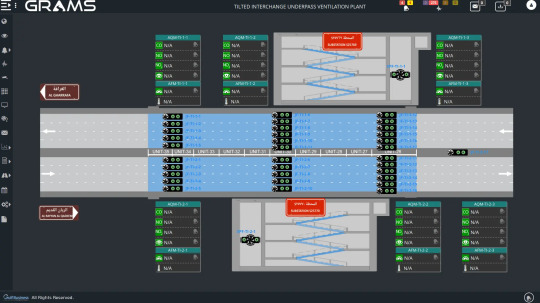
#Top PLC & SCADA Automation in Doha#Operation & Maintenance Services in Qatar#Access Control System Qatar#Building Security Qatar#Turnstile System Qatar#Road Surveys
0 notes
Text
"The Crucial Role of Industrial Control Integrators: Driving Efficiency and Innovation in Modern Industry"
The Essential Role of an Industrial Control Integrator in Modern Industry
In today’s fast-paced industrial environment, the expertise of an Industrial Control Integrator has become indispensable. These professionals or companies specialize in designing, implementing, and maintaining complex control systems that are critical for optimizing industrial processes. This blog delves into the pivotal role of an Industrial Control Integrator, explaining their key responsibilities and the impact they have on industrial efficiency.
What is an Industrial Control Integrator?
An Industrial Control Integrator is a specialized expert or firm responsible for creating and managing control systems that automate and regulate industrial machinery and processes. These control systems encompass both hardware and software components, which work together to enhance performance, increase reliability, and streamline operations.
Core Responsibilities of an Industrial Control Integrator
Control System Design and Engineering:
Needs Analysis: The integrator begins with a comprehensive assessment of the client’s specific requirements. This involves understanding their industrial processes and defining the desired outcomes.
Custom System Design: Based on the assessment, the integrator designs a bespoke control system, selecting the appropriate sensors, controllers, and communication protocols to meet the client’s needs.
Integration and Installation:
Hardware Setup: The integrator manages the installation of essential components such as Programmable Logic Controllers (PLCs), Human-Machine Interfaces (HMIs), and other field instruments.
Software Configuration: They also configure the software that governs the control system, ensuring seamless communication between hardware and other operational systems.
Testing and Commissioning:
System Testing: Before full deployment, the integrator conducts rigorous testing to identify and rectify any issues, simulating real-world conditions to verify system performance.
Commissioning: Once testing is complete, the integrator supervises the final commissioning process, making any necessary adjustments to ensure optimal functionality.
Training and Ongoing Support:
Staff Training: Integrators provide training for the client’s personnel, equipping them with the knowledge to operate and maintain the new system effectively.
Continued Support: They offer ongoing maintenance and support services to resolve any issues and ensure the system continues to operate smoothly.
Why Industrial Control Integrators are Vital
Boosting Efficiency:
Industrial Control Integrators streamline processes by automating operations, which reduces manual input and enhances precision. This leads to improved productivity and reduced operational costs.
Enhancing Safety:
Integrators implement advanced control systems that monitor conditions in real time, increasing workplace safety by triggering alarms or shutdowns when necessary.
Ensuring Reliability:
By designing systems with redundancy and fail-safes, integrators help minimize downtime, which is crucial for meeting production targets and maintaining product quality.
Facilitating Scalability:
As businesses expand, their control systems must adapt. Integrators create flexible solutions that can be easily scaled or upgraded to meet growing demands.
Incorporating Emerging Technologies:
With the rise of Industry 4.0, integrating new technologies such as the Internet of Things (IoT), advanced analytics, and Artificial Intelligence (AI) is becoming increasingly important. Control integrators are key to incorporating these innovations into existing systems.
The Future of Industrial Control Integration
The field of industrial control integration is continuously evolving, driven by technological advancements and shifting industry needs. Future trends include:
AI and Machine Learning Integration: Enhancing predictive maintenance and process optimization.
IoT Integration: Enabling more detailed data collection and real-time analytics.
Enhanced Cybersecurity: Addressing the increasing need for robust security measures to protect industrial control systems from cyber threats.
Conclusion
Industrial Control Integrators are essential in ensuring the efficiency, reliability, and safety of modern industrial processes. Their expertise in designing, implementing, and maintaining control systems is crucial for optimizing operations and keeping pace with technological advancements. For businesses looking to upgrade or implement control systems, partnering with a skilled Industrial Control Integrator can be the key to achieving greater efficiency and performance.
#Industrial Control Integrator#Industrial Automation#Control Systems Engineering#Programmable Logic Controllers (PLCs)#Human-Machine Interfaces (HMIs)#Industrial Process Optimization#Automation Solutions#System Integration#Industrial Efficiency#Operational Reliability#Advanced Control Systems#Industry 4.0#Internet of Things (IoT)#Artificial Intelligence (AI) in Industry#Predictive Maintenance#Industrial Cybersecurity#Control System Design#Industrial Technology Trends#Engineering and Integration Services#Manufacturing Automation
0 notes
Text


Below the cut is a template email to send to Edinburgh Pride regarding sponsorship from Aegon, who have investments linked to the genocide in Palestine. Please feel free to use this text or edit it and make it your own and send it to [email protected]
Dear Edinburgh Pride,
As a queer person living in Edinburgh, I was deeply saddened to learn that the march partner for Edinburgh Pride 2024 is Aegon.
In December 2023 the ‘Don’t Buy Into Occupation Coalition’ published a report that showed Aegon have US$564million invested via shares and bonds in companies operating in illegal settlements in Occupied Palestinian Territories. Source: https://dontbuyintooccupation.org/wp-content/uploads/2023/12/2023_DBIO-III-Report_11-December-2023.pdf
We are watching a live-streamed genocide every day - over 36,000 people in Palestine have been murdered by Israeli forces, including at least 15,000 children. The brutality of these atrocities are unthinkable, with evidence of torture and targeting of hospitals, ambulances and refugee camps.
We all have a responsibility to do what we can to end this genocide. As queer people, we are part of a rich history of resisting oppression and dehumanisation - of both ourselves and those we stand in solidarity with. Pride started as a protest against homophobia, transphobia and police violence. It is an important moment to come together as a community to celebrate queer joy and resilience.
But how can we celebrate using profits stained with the blood of our siblings in Palestine?
Aegon has $564million invested in companies that have been listed by the UN as “raising human rights concerns” for their operations in illegal settlements in Occupied Palestinian Territories, In 1948, 750,000 Palestinian people were displaced from their homes and lands and since then, Israeli settlements have been used to spread this process of colonisation.
In addition to this figure, Aegon also has major investments in Eaton Corp Plc., who supply parts for helicopters and fighter jets to the Israeli military and have recently been the target of major protests at their factory in Dorset. They also invest in Amazon, who support the Israeli military with surveillance technology used against Palestians.
Israel has long used ‘pinkwashing’ as a tactic to justify the brutal repression of Palestinians, using queer people to legitimise this horrific violence. We refuse to allow this to be done in our name.
The tide is turning on companies like Aegon that profit from investments in the companies complicit in genocide. Recently, both Hay and Edinburgh Book Festival have dropped Baillie Gifford as a sponsor after over 800 authors called on them to divest from companies involved in Israel and the fossil fuel industry.
I ask that Edinburgh Pride:
Calls on Aegon to commit to divest from companies involved in supplying technology to Israel and operating in illegal settlements.
Drop Aegon as a sponsor until they are able to show evidence of divestment.
Publicly call for a ceasefire and a free Palestine.
There is no pride in genocide.
I look forward to hearing your response.
XX
Sources:
Investments in companies operating in illegal settlements https://dontbuyintooccupation.org/wp-content/uploads/2023/12/2023_DBIO-III-Report_11-December-2023.pdf
Investments in Eaton https://extranet.secure.aegon.co.uk/static/sxhub/pdf/client-pen-distribution.pdf
Investments in Amazon https://www.aegon.co.uk/content/dam/auk/assets/publication/fund-factsheet/standard_bkj9zs0.pdf
Israel’s pinkwashing: https://bdsmovement.net/pinkwashing
War on Gaza statistics: https://www.aljazeera.com/news/longform/2023/10/9/israel-hamas-war-in-maps-and-charts-live-tracker
Edinburgh book festival ends Baillie Gifford sponsorship: https://www.bbc.co.uk/news/articles/cm553zrr3e4o
6K notes
·
View notes
Text
TikTok Warfare in the Polycule
F!Pregnant Reader x Gojo Satoru x Nanami Kento
Previous Oneshot Chapter [Tumblr/Ao3] | Main Series [Tumblr/Ao3]
A/N: Listen. Gojo would 100% weaponize TikTok algorithms to win an argument. Nanami would simply document the war crimes. Enjoy this descent into chaos. (No spoilers but someone does get pancake privileges revoked.)


Gojo was scrolling on his phone when the TikTok arrived. "If your baby daddy doesn’t instinctively protect your belly in public, you’re better off alone."
His eyes narrowed.
You walked by, adjusting a bag over your shoulder.
Gojo’s hand twitched.
Then: "Satoru."
He sat up. "Yeah, baby?"
"I need to go to the store."
Gojo’s pupils darkened. "You do?"
"Mm-hmm."
Five minutes later, he was pressed against your back in the middle of the grocery store, practically circling you like a guard dog.
His phone buzzed.
Group Chat: Dad Crimes 💀 (Anon)
Father Time: Did you just follow her to the store?
Daddy: Protecting the baby.
Father Time: Sure.
Daddy: She’s not mad anymore tho
Father Time: That’s what you think.
---
Operation: Keep the Pregnant Alive
Nanami knew something was wrong when Gojo smiled at him.
Not the usual lazy smirk. Not the smug, sunshine-drenched grin he used to get out of murder charges or speeding tickets. No. This one had teeth.
Gojo tossed his phone onto the coffee table, then sprawled across the couch, limbs wide open like a trap. His sunglasses had slipped halfway down his nose. His eyes glinted. “It’s time,” he said, voice too calm.
Nanami didn’t even look up from his newspaper. “For what?”
“Revenge.”
Nanami turned the page. “What did Haibara do now?”
“Ah! Not him. Baby.”
“What did our wife do now?”
“She fell asleep under the dining table.”
Nanami raised a brow in his direction, his grip tightening imperceptibly on the paper. “Again?”
“She took the video of me trying to wake her up from the home security footage, edited and posted it with an AI voiceover saying, ‘When your husband thinks you respect him but you’re actually a raccoon with a PLC.’”
Gojo’s eye twitched. “Ten million views and growing. I’m in a meme compilation.”
Nanami pinched the bridge of his nose. “She’s tired these days, Satoru.” The unspoken ‘She’s growing two whole humans with powers nothing like before, you idiot’ hung between them.
“She’s winning.” Gojo leaned forward. “We flip the script.”
Nanami stared. “You want to TikTok her back?”
“No.” Gojo grinned like the devil himself. “I want to psychologically dismantle her using excessive care until she implodes.”
Nanami sighed. “You’re stupid.”
Gojo’s grin widened. “So is she.”
Phase One: Comfort Is A Weapon
You were waiting for your coffee, scrolling on your phone, when your husband’s text came in:
Kento: Hope you're comfortable.
You: Why the hell would I not be?
Satoru: Because you’re not leaving that couch today.
You didn’t even have time to glare at your screen before Gojo waltzed in. Shirtless. Damp from a shower. Gray sweatpants. No shame.
He leaned on the doorway like he’d been cast in a thirst trap film.
Behind him, Nanami followed—sleeves rolled, jaw tense, that look he got when he was two seconds from calling Shoko for backup.
“What the hell is going on?” You asked, already suspicious.
“We’re taking care of you,” Gojo said sweetly.
Nanami unfolded a plush blanket with all the grace of a crime scene investigator. “Sit.”
You frowned. “No.”
Gojo tilted his head. “Do you want Shoko to get involved? Because I will FaceTime her right now.”
You narrowed your eyes, teeth gritted. “I will bite both of you.”
Gojo smirked. “Kinky.”
Nanami sighed. “Just sit.”
You plopped onto the couch like a petulant goblin, muttering the entire time. The warmth seeped into your aching back almost immediately. Traitors.
Phase Two: Pharmaceutical Warfare
Nanami brought over a vitamin packet like it was a weaponized dossier. “You’re iron-deficient,” he said flatly.
“I’m not,” you lied. “I had spinach.”
“When?” Nanami asked.
“...in college.”
Gojo appeared from behind with a smug look and a footstool. “Feet up.”
You resisted. He raised a brow. “Do you want to argue with a man in sweatpants?”
Reluctantly, you complied.
Gojo leaned in, dangerously close. “You’re sweating right now, aren’t you?”
You deadpanned. “No.”
He smiled. “You just twitched.”
You shoved his face away. “Shut up.”
Phase Three: TikTok Retaliation
The next day, a TikTok dropped, "If your girl isn’t drinking water, it’s your responsibility to hydrate her—by force if necessary."
You watched the video in horror. Nanami appeared in the kitchen doorway. Holding a glass. “Drink.”
“No.”
“Drink.”
“No.”
Gojo suddenly materialized behind you like a damn wraith. “Perhaps juice?”
“I want to be left alone.”
“Hydration first.” Then, with intense menace, Gojo whispered, “If you don’t drink this water, I will strap you to all the pregnancy pillows. Publicly.”
Nanami added, “We will post it.”
You grabbed the water and chugged it like it was vodka.
Gojo smirked, leaning dangerously close to your face. “Thirsty.”
You flipped him off.
Phase Four: The Food Trap
You woke up at 3AM to Nanami looming like a culinary ghost with a tray. “Breakfast,” he said. Toast. Yogurt. Fruit. Organized like he was seducing you via glycemic index.
“I didn’t ask—”
“You don’t ask. You survive.”
You reached for the toast while glaring.
Then chewed in righteous judgment. “When will you go back to work?”
Phase Five: Breakdown or Performance Art?
They cornered you in the kitchen.
Gojo grinned. “Admit it.”
“No.”
“You like it.”
“I hate you.”
“You love me.”
You sniffed.
Nanami looked up.
Gojo panicked. “Oh no.”
“I hate you both!” You wailed. Tears streamed. Beautiful. Oscar-worthy.
Nanami’s tone softened. “What do you need?”
You hiccupped. “Pancakes. With the 85% dark chocolate-covered strawberries. And whipped cream.”
Silence.
Gojo blinked. “...You’re not even sad, are you.”
“I might be.”
“You’re faking this.”
“I’m hungry.”
Nanami sighed.
You leaned into Nanami. “I want him to make the pancakes, Kento. Make him.”
Gojo grinned. “You want me to cook shirtless?”
You rolled your eyes. “No, I want you to not burn the strawberries this time.”
“If you let me touch your boobs, I won’t.”
You walked away from Nanami’s arm and returned with his old blade and raised it to Gojo’s pecs. “You were saying?”
Final Score
You—4 (for lies, drama, violence, and thirst)
Nanami and Gojo—2 (for effort, execution, and forearms)
New TikTok: 🎵 "My husbands think they’re in control… until I start crying about pancakes."
Cut to Gojo flipping them. Shirtless. Nanami plating them with surgical precision.
Caption: "Wife: unwell. Husbands: worse."
---
A/N: If you laughed, screamed, or now fear Nanami’s vitamin distribution system, tell me in the comments. (Gojo’s ego needs the engagement.)
Previous Oneshot Chapter [Tumblr/Ao3] | Main Series [Tumblr/Ao3]
Next Chapter [Tumblr/Ao3]
All Works Masterlist
Beta - @blackrimmedrose
#jujutsu kaisen#jjk#nanami kento#gojo satoru#kento nanami#jjk nanami#jjk x reader#jujutsu kaisen x reader#satoru gojo#nanami#jjk fluff#jujustsu kaisen x reader#jjk fic#nanami smau#gojo smau#jjk angst#third wheeling your own marriage#third wheeling#nanami x reader x gojo#nanami x gojo#nanami x reader#nanami x you#nanami x y/n#gojo x nanami#gojo x reader#gojo x you#jjk smau#jjk crack#gojo crack#sassy nanami
114 notes
·
View notes
Text
Reference preserved on our archive (Daily updates!)
Abstract Background: Post COVID-19 syndrome or long COVID (LC) is a novel fluctuating condition with a protracted course in some patients. Specialist LC services have been operational in the UK since 2020 and deal with a high caseload of patients. Aims: To evaluate long-term outcomes in patients discharged from a community-based LC specialist service. Methods: A service evaluation study that included patients who were well engaged in the services [completed the standard Patient Reported Outcome Measures (PROMs) and received intervention from clinician(s)] and had been discharged for at least 3 months from the service. They consented to the study and completed standard PROMs: COVID-19 Yorkshire Rehabilitation Scale (C19-YRS), EQ-5D-5L and National Institute for Health and Care Excellence (NICE) criteria for myalgia encephalomyelitis/chronic fatigue syndrome (ME/CFS). Results: Out of 460 patients contacted, 112 (average of 37.6 months since infection and 9.8 months post-discharge) completed the PROMs. Of these, 90.2% patients continued to experience LC symptoms and disability and had not returned to their pre-COVID-19 health status. The average EQ-5D-5L index score was 0.53 (SD 0.29), highlighting a significant disability and that LC had become a long-term condition (LTC) in the majority of patients who responded to the survey. Of these patients, 43% met the criteria for suspected ME/CFS. Conclusions: A proportion of LC patients develop persistent long COVID (PLC) consistent with a LTC and had a significant overlap with ME/CFS.'
Keywords: COVID-19; post-COVID-19 condition; post-COVID-19 syndrome; post-acute infection syndrome (PAIS)
#mask up#covid#pandemic#public health#covid 19#wear a mask#wear a respirator#still coviding#coronavirus#sars cov 2#long covid
53 notes
·
View notes
Text

Here are ten more lesser-known facts about Bentley and Rolls-Royce:
1. Bentley's Le Mans Dominance: Bentley gained fame in the 1920s for winning the 24 Hours of Le Mans race multiple times, including a streak of four consecutive wins from 1927 to 1930.
2. Rolls-Royce's Silent Engine Test: Rolls-Royce famously tests their engines in a specially designed room called the "Silent Room" to ensure they operate silently and smoothly.
3. Bentley's Connection to W.O. Bentley: Bentley Motors was founded by Walter Owen Bentley, known as W.O. Bentley, in 1919. He was deeply involved in the design and engineering of Bentley cars until the company's acquisition by Rolls-Royce.
4. Rolls-Royce's Bespoke Options: Rolls-Royce offers extensive customization options for their cars, allowing customers to create truly bespoke vehicles tailored to their preferences, from materials to finishes.
5. Bentley's Continental GT Lineage: The Bentley Continental GT, launched in 2003, revived the Continental name which was previously used for Bentley's famous racing cars and luxury coupes in the 1950s.
6. Rolls-Royce's Parent Companies: BMW acquired the rights to the Rolls-Royce brand in 1998, leading to the formation of Rolls-Royce Motor Cars Ltd., while the original Rolls-Royce plc continued as an aerospace company.
7. Bentley's Crewe Headquarters: Bentley Motors is headquartered in Crewe, England, where all Bentley cars have been manufactured since 1946. Crewe is also known for its long tradition of luxury car production.
8. Rolls-Royce's Goodwood Factory: Rolls-Royce Motor Cars operates a state-of-the-art manufacturing plant in Goodwood, England, where every Rolls-Royce car is meticulously handcrafted by skilled artisans.
9. Bentley's Continental Flying Spur: The Bentley Continental Flying Spur, a luxurious four-door sedan, was first introduced in 2005 as a companion to the Continental GT coupe, sharing its platform and design ethos.
10. Rolls-Royce's Phantom Name: The Rolls-Royce Phantom nameplate has been in continuous use since 1925, making it one of the longest-standing models in automotive history and synonymous with luxury and prestige.
These additional facts further illustrate the deep heritage, craftsmanship, and unique characteristics that define Bentley and Rolls-Royce in the automotive industry.
44 notes
·
View notes
Note
Can you tell us more about the keyboard with the built-in siren?

So I've been calling it the "TI Monster".


It's got a bunch of custom specialized keys, and it's a nasty rubber abomination that's clearly designed to be used in some kind of industrial setting.

It's got a keylock, a real key-lock: You have to put in a key to turn it on!
The actual technical info is that it's a TI PN 2594710-0001 REV A Serial Keyboard. This is designed for some kind of PLC (programmable logic controller) system, but I have no idea which one. I've never gotten it working, because it has this little controller board that seems to be fried:

So I'd have to build my own controller to get it working, and I just haven't ever done that. You can see there's a little speaker on the controller, but that's just for key-click. The real sound output is that SONALERT connector in the top right...


Which connects to this: A Sonalert SC616N, capable of 95 dB at 2 feet distance. That's equivalent to a car horn at a distance of 16 feet.
But yeah. I think the idea was that this keyboard was used with some industrial thing that was gonna be used on a loud factory floor, and the keyboard was the only part they knew was gonna be placed anywhere near an operator. So they built a siren into that part to be sure that it could be heard over the factory noise if something went wrong.
I've never tried powering the siren: I am misophonic and hate the idea of it existing.
173 notes
·
View notes
Text
Low Voltage Relays Explained: Types, Functions, and Applications
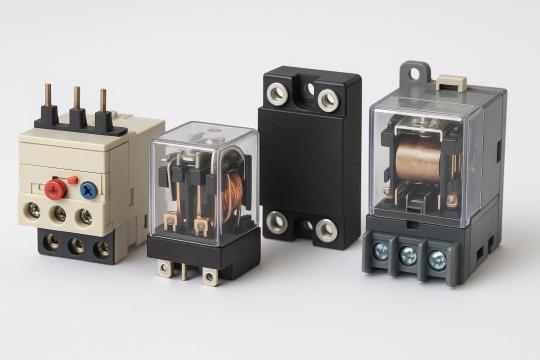
In the complex world of electrical systems, relays play a crucial role in ensuring safety, efficiency, and automation. Among these, low voltage relays stand out as versatile components that manage and protect circuits operating below 1000 volts. Whether in industrial automation, residential power distribution, or commercial infrastructure, these devices act as the nerve center of electrical control and protection.
In this comprehensive guide, we will break down what low voltage relays are, explore their types, explain their functions, and highlight their diverse applications across industries.
What Are Low Voltage Relays?
A low voltage relay is an electrically operated switch that uses a small control voltage (typically below 1000V AC or DC) to switch larger electrical loads on and off. These relays act as intermediaries between control circuits and power circuits, providing isolation, control, and protection.
Unlike manual switches, relays automate the process of circuit management, responding to electrical signals, fault conditions, or system commands without human intervention.
Types of Low Voltage Relays
Low voltage relays come in several forms, each tailored to specific tasks within an electrical system. Here are the main types:
1. Electromechanical Relays (EMRs)
· Use a coil and a movable armature to open or close contacts.
· Provide physical isolation between input and output.
· Common in traditional control panels and basic automation.
2. Solid-State Relays (SSRs)
· Use semiconductors (like thyristors or triacs) instead of mechanical contacts.
· Offer silent operation, faster switching, and longer lifespan.
· Ideal for high-speed applications and environments requiring low maintenance.
3. Overload Relays
· Specifically designed to protect motors and equipment from sustained overcurrent.
· Available as thermal overload relays (using bimetallic strips) or electronic overload relays (using sensors and processors).
4. Time Delay Relays
Provide a deliberate time lag between the relay receiving a signal and switching.
Used in motor control circuits, lighting systems, and sequential operations.
5. Overcurrent and Short-Circuit Relays
· Detect and react to current exceeding preset thresholds.
· Essential for system protection against faults and overloads.
6. Voltage Monitoring Relays
· Monitor voltage levels and trip when voltages fall below or rise above safe limits.
· Protect sensitive devices from under voltage and overvoltage conditions.
Functions of Low Voltage Relays
Low voltage relays serve multiple vital functions in electrical systems:
1. Switching and Control
Relays control the opening and closing of power circuits in response to low voltage signals from controllers, timers, or sensors. This enables remote and automated control of large electrical loads.
2. Protection
Relays detect abnormal conditions like overloads, overcurrent, under voltage, and phase failures. When such conditions arise, they disconnect the affected circuit to prevent equipment damage or fire hazards.
3. Isolation
They electrically isolate control circuits (usually low voltage, low current) from power circuits (high voltage, high current), ensuring safety and reducing interference.
4. Signal Amplification
A small control signal (from a PLC, sensor, or microcontroller) can trigger a relay to switch much larger loads, effectively amplifying the control power.
5. Automation and Sequencing
In complex systems, relays help sequence operations by ensuring that processes occur in the correct order and at the right time intervals.
Applications of Low Voltage Relays
Low voltage relays are the backbone of automation and protection in various industries. Here are some key application areas:
Industrial Automation
· Control of motors, pumps, conveyor belts, and production lines.
· Use in programmable logic controllers (PLCs) and distributed control systems (DCS).
Power Distribution Systems
· Protect electrical panels from overload and short circuits.
· Monitor voltage and current levels in distribution boards.
Building Automation
· Lighting control systems.
· HVAC (heating, ventilation, and air conditioning) systems.
· Elevator and escalator controls.
Renewable Energy Systems
· Manage and protect solar inverters, battery banks, and wind turbines.
· Automatically disconnect faulty sections to prevent system-wide failures.
Data Centers and IT Infrastructure
· Ensure stable power supply to servers and networking equipment.
· Protect sensitive electronics from voltage fluctuations.
Transportation
· Railways, metros, and automotive applications for control and safety circuits.
Home Appliances
· Found in washing machines, microwave ovens, and HVAC units to automate functions and provide protection.
Advantages of Using Low Voltage Relays
· Enhanced Safety: Isolate control and power circuits, reducing electrical shock risks.
· Automation Ready: Easily integrated into automated systems for smarter operation.
· Cost-Effective Protection: Safeguard expensive equipment from damage due to electrical faults.
· Versatile: Available in many forms to suit different voltage levels, currents, and response times.
· Reduced Maintenance: Especially with solid-state relays, which have no moving parts.
Future Trends: Smart Relays and IoT Integration
As industries move toward smart grids and Industry 4.0, low voltage relays are also evolving:
· Digital relays offer programmable settings, self-testing, and event recording.
· IoT-enabled relays can send status updates and alerts to centralized monitoring systems.
· Energy-efficient designs reduce power consumption while providing reliable protection.
Conclusion
Low voltage relays are indispensable in modern electrical engineering, seamlessly combining protection, control, and automation. From safeguarding your home appliances to managing the power in a sprawling industrial plant, these devices ensure that electrical systems run smoothly and safely.
Understanding the different types, functions, and applications of low voltage relays empowers system designers, engineers, and even DIY enthusiasts to build safer and more efficient electrical setups.
As technology advances, the role of these small but mighty devices will only grow, driving the future of safe, smart, and automated power systems.
9 notes
·
View notes
Text
#Hydraulics excavator in Pune#electrohydraulics Excaviators in Pune#industrial excavator in Pune#Hydraulic motor excavator in Pune#automated excavator in pune#solenoid excavator in Pune#Portable hydraulic excavator in Pune#PLC operated excavator in Pune
0 notes
Text
Flying Scotsman in 2004 - A Comedy of Errors and Owners:
Ok - so this is something I've been sitting on for a while now, but I feel like with 'The World Famous Engine' now being uploaded to Ao3, now is the right time to cover this rather insane topic. See, we all know the story of Flying Scotsman and the NRM: the NRM bought the engine for the nation, and then sent it into the Works for 1 years' worth of work in 2006... One year of work that ended up spiralling into ten years and £4.2 million.
But behind that story is a rather more shocking story, and one that really needs more recognition to help people understand just how absolutely shockingly Flying Scotsman had been treated before that overhaul.

Sir William McAlpine:
Our story most likely begins under Alan Peglar, but I have a rather sneaking suspicion it actually gets interesting under McAlpine. Sir William McAlpine bought 4472 Flying Scotsman in 1972 to save the engine after Alan Peglar went bankrupt in San Francisco, leaving the engine on a US Military Base.
He brought Scotsman and had the engine restored at Derby Works in England, and then successfully owned and ran the engine for another 23 years, making him the longest-lasting and most successful of all Scotsman's owners.
Pretty good achievement!
But, during this era, Flying Scotsman visited Australia, broke the record for the longest non-stop run by a steam locomotive, pulled the Royal Train, ran on a multitude of heritage railways and mainline excursions, got an overhaul three times - including one at Barrow-in-Furness (story idea, anyone?). This is not where the worst of the issues arose from, but it does give you a good idea of the kind of work this engine was being tasked with.
And then in 1995, it was involved in an accident at Llangollen Railway. When put back into steam, smoke emerged from a crack separating the boiler and the front cab. It was deemed a total failure and immediately withdrawn from service immediately - and that's what did McAlpine in. He sold the engine off to cover some debts, and Tony Marchington
What do I think went wrong here? I have a feeling that Scotsman was run pretty haggard in Australia (which, fair - it's not always a very nice country to machines) and when refitted to his BR livery, several... shortcuts were made to get the engine back in service. All the same, this isn't where the trouble came from.

Tony Marchington:
And here's where things went south. Fast. Flying Scotsman was bought, went through a three-year long overhaul worth £1 million and then was set to work. Thing is, that overhaul had a number of red flags surrounding it - perhaps most notable being the fitting of an A4 boiler working at 250psi. Now, for those unaware - the original A1 class ran at 180psi, and the upgraded A3 class ran at 225psi. The engine was being run at a pressure it was extremely unfit to operate with.
It would be a bit like fitting a massive V12 motor to a Honda Accord. Yes, the car will move extremely fast and look impressive and move for a while, but every other piece of that car will deteriorate rapidly due to the pressure it's all under. Now transfer that to a steam locomotive - one where to reach that pressure, the firebox is under a lot of strain.
Flying Scotsman failed a lot during the Marchington era, and it's not surprising why. The poor engine was literally falling to pieces - as one NRM staffmember noted: "On our first inspection, the rear drivers had been removed to deal with bearing problems. The visiting NRM team was most unimpressed with the quality of work being done on the bearings. Other examples of poor workmanship (of which I cannot remember the detail) were evident on inspection.”
Please note, the bearings and valves had all recently been replaced.
Also note, Tony Marchington was under pressure from the shareholders of Flying Scotsman PLC - a company he set up - to make money, and so many of the fitters working on the engine may have been given far, far too many constraints in time and budget to properly overhaul the engine, in essence needing to just 'do the bare minimum to get it back in service'...
And this is the condition the NRM bought 4472 Flying Scotsman in.
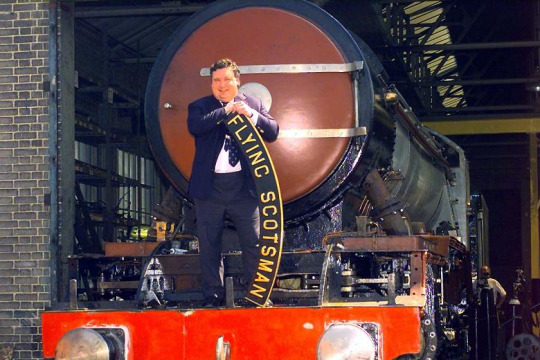
The National Railway Museum:
All of the above is an indication of the condition that Flying Scotsman was in when bought in 2004 - but that only tells about half of the story. The other half is a bunch of issues surrounding the purchase, certification and understanding of just how bad things were. And make no mistake, the NRM is not blameless in this circus - it just managed to inherit a bad situation and then fumble with it until they sat down and figured out what had happened.
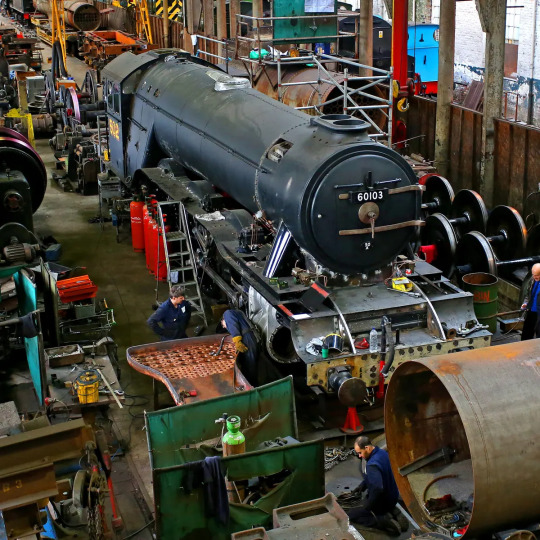
Let's take a moment to look at the AEAT report that the NRM got, then compare it to reality:
The AEAT report stated that:
"Whilst it was not possible to complete a thorough examination of the locomotive, or to witness it in steam, the condition of the locomotive has been monitored regularly as part of the VAB audit process. Taking this into consideration, it is considered that the general mechanical condition is satisfactory for continued operation, subject to effective maintenance, until the next General Overhaul in 2006. The scope of mechanical overhaul is not anticipated to be extensive but will involve strip down of the motion and axleboxes to gauge wear and remedial action. The cylinders all require re-lining and boring to nominal diameter."
The reality of the condition of the engine was far from this rather rosy portrayal given by AEAT. For starters, the engine was not properly examined, and several areas of testing were 'not possibly to be checked adequately' for a variety of reasons, including:
the locomotive was being prepared for a test run
equipment failure
4472 Flying Scotsman not being in steam
Anyone notice something off? Why exactly can the company not see how the engine is when in steam if the engine is being prepared for a test run?

Furthermore, AEAT had been the VAB (Vehicle Acceptance Body) for Flying Scotsman for 14 years by this point and finding a huge number of faults at this point very much would have raised questions about their work. More probably, the company had grown accustomed to the engine working, and simply assumed everything was satisfactory unless demonstratable to the contrary. Like the NRM admitted:
"[T]he previous owner’s VAB may not have been the best choice of inspector."
Thing is, AEAT included pictures in their report, but most of these were of the air brake compressor, locomotive air brake, tender air brake cylinders, TPWS antenna selection switch and the TPWS antenna mounting arrangements, which while critical to obtaining permission to operate on Network Rail, don't say much about the actual condition of the engine. And the photos that were of the actual mechanical parts of the engine were... telling.
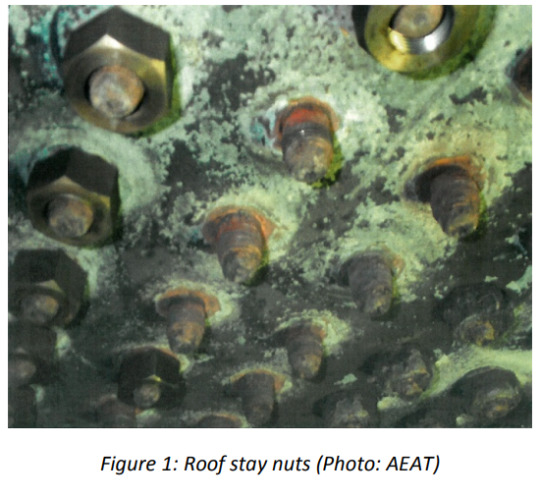
The Stay Nuts in the firebox are rusting, melting and missing. And that wasn't the only major issue with the engine - several of which were extremely dangerous:
the Robinson superheater header doors had been seal welded;
other inspection doors had also been seal welded;
Repairs to defective studs on the superheater header were needed;
the smokebox door locking mechanism was broken;
the firebox stays needed caulking;
the boiler mountings and pipework in the cab was considered dangerous;
the air brake reservoirs were overdue re-certification;
two tender springs needed replacing;
Re-metalling one crosshead was needed, which resulted in having to remove the bogie, and led to the discovery that the piston rods were incorrectly fitted to the crossheads and required extensive repairs in order to make them fit properly;
Removal of the 'belly' access door in the bottom of the boiler barrel in order to remove a build-up of some 6 inches of sludge;
one of the tender wheel tyres was flat;
the air pump needed repairs;
the vital axlebox oil pads which were long overdue for replacement;
the tender handbrake just didn't work and needed repairs;
121 boiler tubes needed replacement (2004);
the boiler itself needed replacement (2006);
Foundation ring heavily corroded and cracked;
a large number of latent fractures throughout the whole of the locomotive's frame assembly;
the valves and bearings were faulty or broken;
there was a serious crack in the right-hand cylinder;
the entire firebox itself was in desperate need of replacement;
the boiler washout plugs had been fitted with domestic gas plugs;
the wheels are all in need of re-turning;
the frame hornblocks are all cracked;
one of the driving wheels was bent;
the frame stretchers were all cracked and beyond repair;
The centre-cylinder motion bracket also had cracks;
The frames were wrongly aligned;
And the frame's horn ties were scrap, and needed to be remade.
That is thirty separate issues that the NRM discovered between 2004 and 2012 restoring the Flying Scotsman. The Flying Scotsman needed such a complete overhaul to be restored that some people argued that it would cheaper to just build an entirely new engine.
A completely new version of this engine:
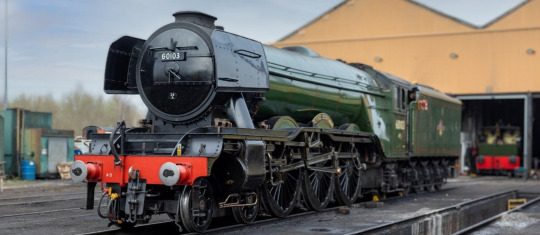
And remember, AEAT certified this engine to run on the mainline. The Flying Scotsman had turned into a literal moving death trap under its various owners, and I am not surprised it cost the NRM £4.2 million to rebuild Flying Scotsman.
In summary, 4472 Flying Scotsman was about as sick as an engine could get when it arrived at the NRM. The amount of work required to fix the poor engine was extensive - and some may argue unjustified. Personally, I disagree. Yes, Flying Scotsman cost a ridiculous amount of money to save and rebuild - but this is not an engine who would ever accept living on a plinth in a museum. This is an engine with a fascinating history filled with trials, tribulations and triumphs; and in my opinion the Flying Scotsman's place is on the mainline. Will there be a day when the old engine has to be withdrawn and placed in the NRM? Probably - it's the oldest mainline certified engine in the UK already, and it's not getting any younger. But by that same token, Flying Scotsman went through a massive, extensive overhaul to ensure that generations to come could see the majestic A3 doing what it always did best, and there's something truly inspiring about that.

A big thank you to the NRM for saving Flying Scotsman, and an even bigger 'what the hell?' to the people who almost destroyed it by being careless.
The pictures used in this post do not belong to me. All pictures belong to their owners. If you wish to read the NRM Flying Scotsman report yourself, this is the URL, and a hyperlink to its archived form on the Wayback Machine:
#weirdowithaquill#railways#real railway stuff#Flying Scotsman#4472 Flying Scotsman#NRM#The National Railway Museum#Flying Scotsman very nearly didn't get his happy ending#There was a lot wrong#this stuff is crazy#long reads#very long post#lner a3#wayback machine
137 notes
·
View notes
Text
Best ICT and ELV Systems Qatar, Doha
With a committed team of skilled experts, the Business Unit also specializes in cutting-edge integrated IT Passive and Structured Cabling and ELV Technology Solutions about ICT and ELV Systems . We have a great deal of experience in providing, setting up, and commissioning various ELV systems. Our experience allows us to satisfy the needs of our clients in a number of industries, including high-end meeting and conference spaces, IP lighting, CCTV networks, integrated command and control centers, IP-based public addressing systems, access control, and other intelligent solutions. In addition to ISP and OSP cabling (both fiber and UTP), pathways design and assessment, datacenter solutions, IIM [Intelligent Infrastructure Management] cabling, DCIM [Data Center Infrastructure Management] solution, and environment monitoring solutions, we specialize in providing end-to-end structured connectivity solution design and technical consulting services.

Best ICT and ELV Systems Qatar, Doha
#Operation & Maintenance Services in Qatar#ICT and ELV Systems#Top PLC & SCADA Automation in Doha#PLC & SCADA Automation in Doha#PLC & SCADA Automation in Qatar#Best Road Network Surveys in Doha#Top Road Network Surveys in Qatar#Road Network Surveys#Gulf Business Qatar
0 notes
Text
How High-Quality Low-Voltage Switchgear Accessories Save You Money!

One of the main goals of industrial power systems is to cut costs without sacrificing performance.
Upgrading your low-voltage switchgear accessories is one frequently disregarded method to accomplish this.
Let’s discuss how purchasing high-quality switchgear accessories can extend the life of your electrical infrastructure, reduce operating costs, and boost system performance in this guide.
What Are Low-Voltage Switchgear Accessories?
Low-voltage switchgear accessories are parts that improve how well your electrical switchgear systems work, keep them safe, and make them reliable. These include:
- Circuit breakers
- Contactors
- Busbar systems
- Surge protection devices (SPDs)
- Control relays
- Communication and monitoring modules
They offer power distribution, fault protection, and real-time system monitoring and are therefore crucial in industrial automation and energy management.
1. Minimize Downtime and Improve Productivity
Cheap, low-quality parts are likely to break down, grinding work to a standstill. Every hour of unscheduled downtime at a plant equals lost work and income.
✅ Advantage:
The superior switchgear elements can withstand more load, function through more switch cycles, and withstand more demanding conditions. It guarantees power flows smoothly at all times and decreases the possibility of shutdowns.
2. Extend the Lifespan of Equipment
Switchgear accessories form the first line of defense for your equipment. Low-quality accessories will let surges or faults pass through and can destroy costly equipment like motors, drives, and PLCs.
✅ Advantage
Stable components such as motor protection relays and surge protection devices maintain voltage levels constant and prevent overloads, thus safeguarding equipment downstream of them.
3. Reduce Maintenance and Replacement Costs
Sustained maintenance, breakdown calls, and replacement components are costly over time. Cheap parts fail early, thereby adding to your maintenance load.
✅ Advantage:
Purchasing robust, low-maintenance accessories translates to fewer services and repairs, which results in overall savings.
4. Improve Energy Efficiency
Loss of power and energy inefficiency typically start with old or badly designed switchgear devices. Even small problems within a big system can lead to higher energy bills.
✅ Advantage:
Good-quality accessories provide the highest conductivity and proper switching, allowing for optimal voltage output maintenance and avoiding energy wastage.
5. Enhance Electrical Safety and Regulatory Compliance
Faulty accessories are a main cause of electrical fire and safety hazards. Substandard systems can also fail to meet industry standards.
✅ Advantage:
Good quality switchgear parts typically conform to IEC, UL, or other important standards for safe functioning and regulatory compliance.
Conclusion: Small Components, Big Savings
Cheap accessories can appear to be a good deal initially but can turn out to be costly over time. Employing quality low-voltage switchgear accessories guarantees that:
- Less system crashes
- Equipment lasts longer
- Reduced maintenance
- Reduced energy costs
- Safer operations
Looking for Reliable Low-Voltage Switchgear Accessories?
At Almond Enterprise, we specialize in supplying industrial-grade switchgear components that deliver long-term performance and value.
Contact Our Experts: [email protected] for tailored recommendations
7 notes
·
View notes
Text
INFO ON TBS 5 HAS DROPPED!!!!
Paige Mahoney is outside the Republic of Scion for the first time in more than a decade – but she has no idea how she got to the free world. Half a year has been wiped from her memory.
As she makes her way back to the revolution, her journey takes her to Venice, where she learns a dangerous secret – one that could change the face of the war between humans and immortals. Before she can return to
London, she must help the Domino Programme unravel the sinister Operation Ventriloquist.
And it soon becomes clear that the one person who could recover her memories – Arcturus Mesarthim – might also hold the key to saving Italy.
Lyrical, touching and action-packed, The Dark Mirror drives the bestselling Bone Season series forward, showing Samantha Shannon at the height of her powers.
Publisher: Bloomsbury Publishing Plc ISBN: 9781408879443 Number of pages: 368
Published: 25/02/2025
@mareshmallow
#tbs 5#the bone season 5#the dark mirror#only the last six months? okay so she still knows she's a voyant and forgot about anything from the mime order onwards#does that mean jaxon tries again to get her back to his side?#the bone season#samantha shannon#tbs 5 spoilers
20 notes
·
View notes
Text
Totally Wasted Wind Power
Bloomberg reports UK Is Paying £1 Billion to Waste a Record Amount of Wind Power
Burgeoning capacity and blustery weather should have driven huge growth in output in 2024. But the grid can’t cope, forcing the operator to pay wind farms to turn off, a cost ultimately borne by consumers. It’s a situation that puts at risk plans to decarbonize the network by 2030 and makes it harder to cut bills. Crucial to the net zero grid target is a massive build-out of renewable power, particularly from wind. Britain has boosted its offshore fleet by 50% in the past five years and is set to double it in the next five, Bloomberg data show. But the grid hasn’t expanded at the same pace. As a result, the operator is increasingly paying wind farms, particularly those in Scotland, not to run. So far this year, the UK has spent more than £1 billion ($1.3 billion) in “congestion costs” to turn off plants that can’t deliver electricity because of grid constraints, and switch on others. Last month for example, when Storm Bert swept across the UK, some of its newest and biggest wind parks were still. Scotland’s £3 billion Seagreen project, owned by SSE Plc and TotalEnergies SE, was shut off. SSE’s Viking development on the Shetland Islands was also closed. Wind vs Gas UK generators usually sell output in advance on the wholesale market. But those transactions don’t take into account the physical limitations of balancing supply and demand in real time. To keep the lights on, the operator steps in, paying some plants to turn off and others that are closer to demand centers to fire up. Often, this means shutting off a far-flung wind farm and starting up a gas-fed plant that’s closer to a city.
4 notes
·
View notes